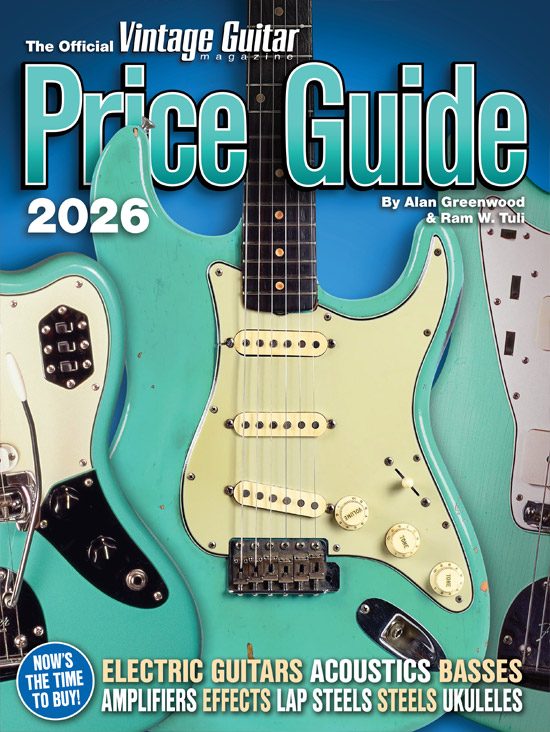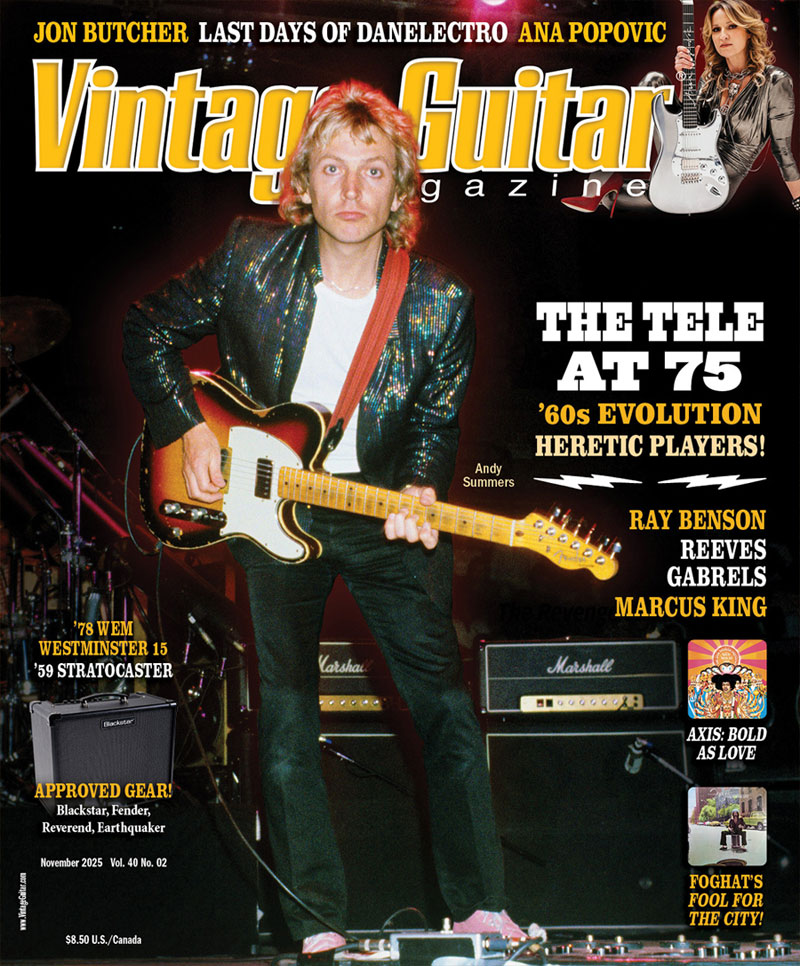
On Get Your Back Into It!, guitarist Nick Moss and harmonica savant Dennis Gruenling combine blues, swing, and rock and roll into an infectious blend of foot-stomping groove, sweat, and passion. It’s pop music from Chicago’s 1950s, and Moss plays it clean, tasty, and with a bit of help from Freddie King.
What is your stylistic origin story?
I’m an extreme student and fan of old-school blues – the Chicago stuff because that’s what I heard growing up in and around Chicago and my mom’s record collection. The Chicago stuff is where I lean the heaviest. Years ago, when I was just a 20-year-old kid playing in Jimmy Rogers’ band, I was so eager to learn and please him, and I’d ask, “Do you want me to play it like this? Do you want me to play this lick or that lick? You played it like this with Chess Records, should I play it like this?” He just looked at me and said, “That was one moment in time. We never played it the same way after we recorded it. That’s the way Leonard Chess wanted it. As long as you got the time right, the exact notes don’t mean s**t.”
I’ve always felt that as long as I could get as close to the feel of that genre, style, or artist without playing note-for-note, that’s going to bring out my style. Anyone in the know is going to go, “Oh man, that sounds like B.B. King or Freddie King.” But then they’re going to say, “But that’s not a Freddie King lick. It sounds like a Freddie King lick.” I would rather have someone say, “Hey, that sounds like a Freddie King lick,” than say, “Hey, That’s a Freddie King lick you just ripped off (laughs)! I’ve been known to play note-for-note stuff because that’s how we all learn, but I don’t intentionally learn someone else’s stuff and replicate it like a museum piece. I’m trying to stay in the flavor, tone, feel, and time, like Jimmy Rogers told me.
Which guitars are you playing now?
Most of the time, playing live I’ve got some ES model, a Strat or a Tele, and something with P-90s. On the recording, I used multiple guitars and amps. I have two ’53 Les Pauls, a ’69 ES-355 that I play a lot, and I just started bringing out my ’66 ES-345 again. The ’53 Les Paul comes out a lot. My Strat is a parts guitar based on a ’58, and I have a Fender Custom Shop ’53-reissue Tele. The last one is a ’60s Epiphone Riviera. All of them were on the recording.
The guitar that doesn’t come out that often but was on the recording is my sunburst ’55 ES-350. Grez Guitars built me a gorgeous replica of it in blond.
How about amps?
I play a ’58 Fender Pro in a newer tweed cabinet with a reproduction JBL speaker. I also have a ’62 Pro with a JBL. I like 15″ speakers. Those are the main amps, along with some custom-built tweed Bassman copies.
Are you a pedal guy?
I used to be the guy who said, “Oh, I’ll never use pedals,” because it always felt like I was cheating if I was using them.
The guys who use pedals well are those who don’t lean on them – they just add a little extra sauce. It’s like eating a steak and saying, “A little salt and pepper won’t hurt,” but pouring a bunch of ketchup over it is another thing (laughs).
All of a sudden, though, they started making pedals that sounded good and weren’t intrusive. I try not to go crazy with them, but I like the Catalinbread Topanga Reverb because I got sick of my reverb tank crashing every time my drummer would hit the kick drum. I also use an old delay for a short slapback on certain tunes. I recently got a Nocturne Brain Jr Barnyard that I like for small rooms because it makes my amps sound smaller. I needed something to dial it down, and that makes it sound like a ’40s Epiphone.
Who is your #1?
Freddie King is the guy I feel closest to. He played with intensity all through his life. He was so powerful, and his style was so muscular and in your face. I tend to play a little bit more like that. I’m not a very subdued player… I can play subdued and finesse stuff, but I like muscular, brawny licks. It’s probably why I have a goldtop Les Paul with P-90s.
This article originally appeared in VG’s November 2023 issue. All copyrights are by the author and Vintage Guitar magazine. Unauthorized replication or use is strictly prohibited.



